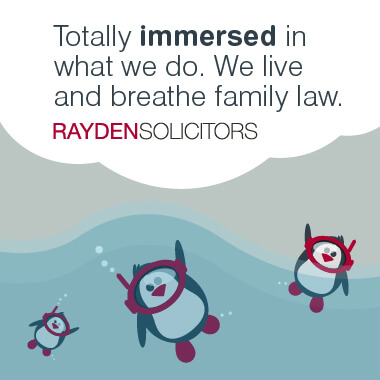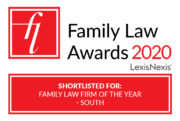The Daily Mail recently reported on the outcome of a case between Business Manager, Sharon Blades and her financial analyst partner, Dr Chris Rowland following the end of their relationship. I defer to the Daily Mail article for all of the salacious detail – after all this is a solicitor’s blog and not a tabloid piece – but suffice to say their 5 year relationship ended in tears.
The Background
Dr Rowland and Ms Blades had bought a property – Tadmarton House- together in 2009. Dr Rowland paid the purchase price (some £1.55m) and costs of purchase, in full. However, despite this, and crucially, they chose to buy the property in their joint names and instructed their solicitor that they would hold the property as joint tenants.
After the demise of their relationship, and over a reasonably long period of time, the parties discussed matters over email and particularly what should happen to the property. For his part, Dr Rowland raised that they “had sort of had an agreement” about the property and suggesting that the property could be used by Ms Blades but should then go to his daughter Hanna on her death. Ms Blades asserted her rights to the property as a joint owner. Ultimately, Dr Rowland brought a claim in the High Court seeking to have the Court decide what his and Sharon Blades’ respective beneficial interests in the property were (and to order her to pay him ‘occupational rent’ for the time which she had occupied the property, he said to his exclusion, although I will not deal with that element here).
The Law
- There are two estates in property – the legal estate and the beneficial estate.
- When you buy a property as joint owners, the legal estate is always held as joint tenants. However, people purchasing a property in more than one name, may opt to hold the beneficial estate as joint tenants or tenants in common.
- Joint Tenants own the property jointly and severally. Essentially, each party owns the whole of the property and if one dies, then there is no divisible share to fall into the estate. The remaining owner(s) continue to own the whole of the property (this is called the rule of survivorship).
- Tenants in common own the property with divisible or distinct shares. They may hold the property so that they each own an equal share, or different shares. Each owner is free to leave their share in their Will and, in theory, to sell or transfer it (though practically the sale of an individual share in property might be tricky).
- How to hold the property should be a discussion which takes place, with appropriate legal advice, in advance of the purchase of the property. Often, however, disputes arise later (usually on the breakdown of the co-owners’ relationship), with one party seeking to suggest that the intention was something other than is reflected in the property’s Land Registry Title.
- Where there is an express declaration of trust made by the parties when purchasing the property, then the law says that is conclusive unless:-
- There was a mistake (giving rise to a claim for rectification of the declaration of trust) or fraud or duress (which give rise to a claim for rescission of the declaration of trust, i.e. setting it aside).
- It is varied, by way of a further Deed, by a subsequent agreement between the parties; or by a subsequent common intention of the parties giving rise to a constructive trust.
- Where there is no express declaration of trust, it is more complicated.
- The starting point is that the beneficial interests in the property reflect the legal ownership of the property.
- However, this presumption, can be displaced, but not lightly. The law recognises that the breakdown of a relationship can cause parties to misremember and their memories may be tainted by ‘ill will’.
- Displacement of the presumption generally takes place where
- There is evidence that the parties had a different common intention when the property was purchased; or
- There is evidence that the parties later formed a different common intention; and
- one party does something which shows that they acted on that alternative common intention in a way which was to their detriment (for short, ‘detrimental reliance’.
- Occupational rent is based upon the principle of equitable accounting and, where assessed as appropriate by the Court, sees a party compensated for the loss of the use of their share of the property.
So where did it all go wrong for Dr Rowland?
The Court found that Dr Rowland and Sharon Blades gave clear instructions to their solicitors that they wished to hold the property they purchased as beneficial joint tenants. Seemingly as a result of an error, when they signed the Transfer which declares how the property should be held, this section was left blank. The form was returned by the Land Registry and, on the basis of the instructions he was previously given, their solicitor ticked the box to indicate that the property would be held as beneficial joint tenants and returned it to the Land Registry.
Had that box been ticked at the time that the TR1 was signed by Dr Rowland and Sharon Blades, then the TR1 would have been considered as a declaration of trust and conclusive evidence of their joint intention at the time of purchase, unless it could be rectified or rescinded, as explained above. However, the Court found that as the box had not been ticked at the time of execution, no declaration of trust had been executed by the parties.
The Court therefore had to consider the case on the second set of legal principles set out above and examine what the parties intended at the time of purchasing the property. There was a significant amount of evidence that they did indeed intend to hold the property as joint tenants, including written instructions to their solicitors. There had been a ‘cooling off period’ after exchange of contracts, in which their solicitor invited them to consider matters and let him know of any change of plan before completion. There was no change of plan communicated.
Dr Rowland’s case was that there had been a common intention at the time of purchase that the property should end up with his daughter, Hanna. The Court found that no such intention was discussed with their solicitors and that the only intention which would have been discernible to Ms Blades or reasonably understood by her at the time of purchasing the property, was the intention to own the property as beneficial joint tenants.
Had the Court found that there had been a common intention of the sort that Dr Rowland claimed, then there would have been clear detrimental reliance by him, because he put down the whole of the cost of purchasing the property. But that alone is not enough.
Lessons to be learned
It may seem unfair – indeed the Judge acknowledged that “in one sense, the outcome is a harsh one”. However, the decision is the correct one – it acknowledges that in effect a gift of half of the property was made by Dr Rowland to Ms Blades and reflects that you cannot simply undo a legal act later because of a change of feelings.
The Court was not persuaded by Dr Rowland’s argument that there had been a common intention that Hanna should inherit the property at a later date and that is where his case really failed. However, he would never have been in the position of needing to argue about common intention had there been a Declaration of Trust or other formality at the time of purchasing the property which reflected what the intention was at that time.
Had Dr Rowland sought independent legal advice and explained that his daughter should end up with the property, then he would have been advised a) that the joint tenancy was not fit for that purpose; and b) what he stood to lose by entering into a joint tenancy.
This shows a wider problem which often crops up. There is an area of advice which falls somewhere between conveyancers and family lawyers. A conveyancer instructed by two parties has a conflict of interests in advising one over the other. They can explain the difference between a joint tenancy and tenants in common and the effect of a property being held a particular way but they cannot say to one party “hold on – you are making a mistake”. However, they can signpost one or both parties towards independent legal advice and they can tell you if what you are proposing to do does not reflect your stated intentions. Maybe in these situations you do not think that a family lawyer is the person you need to be speaking to. But I disagree. Who better to tell you what the future consequences could be of jointly owning a property in a certain way? Because we have experience of dealing with the fall out.
So, the golden rules:
- Tell your conveyancer what you want to happen when
- Consider seeking independent advice from a family lawyer about the consequences for you of co-ownership.








